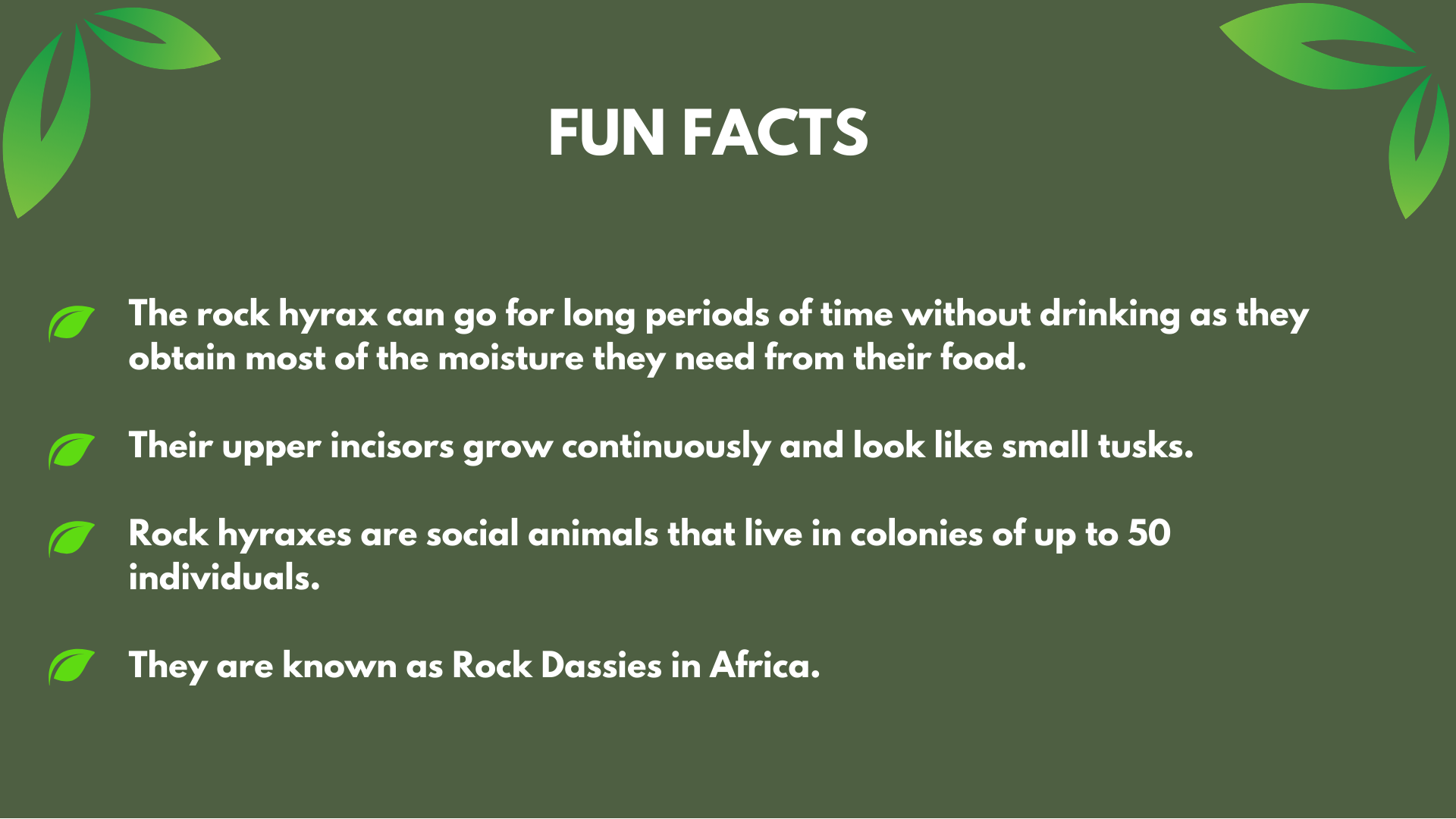Rock Hyrax
Rock Climbers!
Rock hyraxes have padded, sweaty feet. Their feet have black, rubbery pads that are moistened by numerous sweat glands. The pads lift up in the center for a suction cup-like effect that helps them keep their grip on rocky surfaces.


The rock hyrax may look like a large guinea pig, or a rabbit but it is neither. The rock hyrax has similar teeth, toes, and skull structure to that of an elephant and shares an ancestor with the elephant. It has strong molars, which it uses to eat tough vegetation, and two large incisor teeth that grow out to be tiny tusks, just like an elephant. Although obviously much smaller than their distant ancestors, it is their teeth and bone structure that relates them to one another.
The rock hyrax’s coat ranges in color from yellowish to grayish-brown, with a lighter underbelly. On their back, they have a dorsal gland, or sweat gland, which is covered with longer, darker hairs. This gland is used to mark rocks or trees to communicate with other hyraxes. They have short legs and stumpy toes with hoof-like nails. They have a grooming claw on the inner toe of the back foot used for grooming and scratching.
Rock Hyraxes make a variety of noises including whistles and shrieks to communicate both within the group and with other colonies in the area, with the male sounding the specific alarm call if a predator is spotted nearby. They spend the majority of their lives sunbathing on the rocks to warm up, before going off on short foraging trips, rarely far from the entrance to their home.

________________________________________________________________________________________________________________________________

Where can I see a rock hyrax?
Come see them in their habitat in
the Deserts Building. But look carefully,
they love to hide up at the top of the rocks.
_______________________________________________________________________________________
How rock hyraxes are doing in the wild
While rock hyrax populations are considered stable, numerous conservation groups are working to protect the species. African Wildlife Foundation is among the groups working to conserve the species. Some of their conservation efforts include continuing research, working with local governments and developing conservation tourism.








